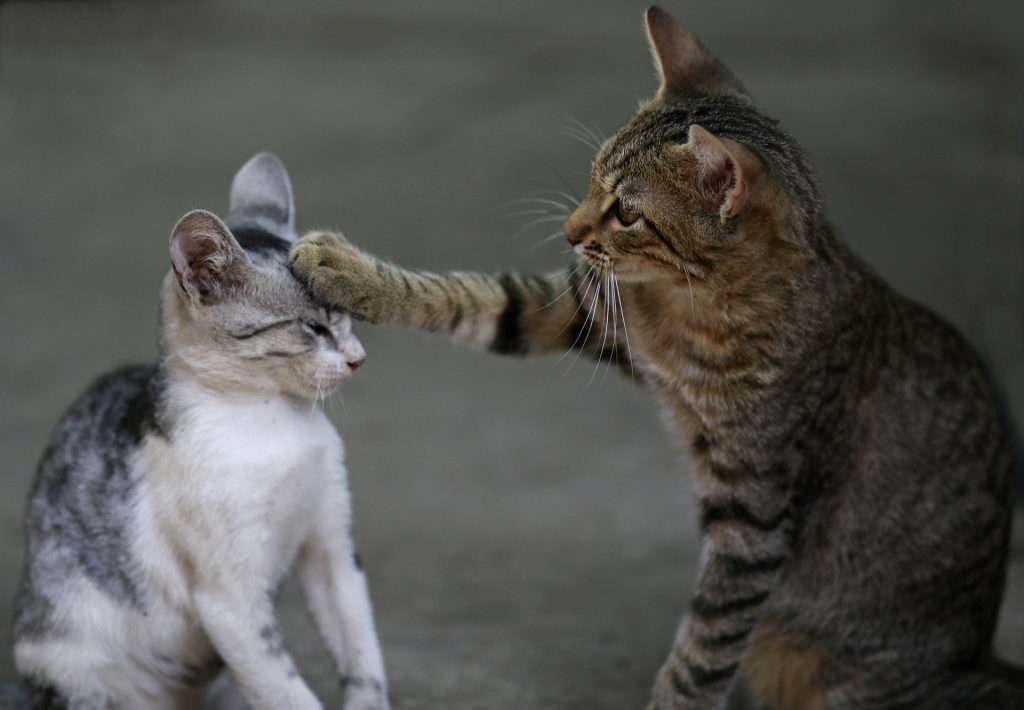My cat is hissing at my other cat all of a sudden due to territorial aggression. This behavior can occur when one cat feels threatened by the presence of another cat in their territory.
When a cat hisses, it is a warning sign that they are feeling defensive and trying to establish boundaries. Understanding the reasons behind this sudden aggression can help cat owners address the issue and create a more harmonious environment for their feline companions.
We will explore some common causes of sudden hissing between cats and provide some tips on how to manage and resolve this behavior. By addressing the underlying causes and introducing gradual changes, cat owners can help their cats establish a peaceful coexistence.
**possible Reasons For Sudden Cat Hissing**
When two cats who used to get along suddenly start hissing at each other, there are a few possible reasons behind this behavior.
| Territorial Issues: | Cats are territorial animals, and if they feel like their territory is being invaded or threatened by another cat, they may start hissing to assert dominance and protect their space. |
| Fear or Anxiety: | A sudden change in the environment or a new stimulus can cause fear or anxiety in cats, leading to defensive behavior like hissing. This could happen if a new object or person is introduced into their surroundings. |
| Introduction of a New Cat: | Bringing a new cat into the household can disrupt the established hierarchy and trigger hissing as the cats adjust and establish their positions within the group. |
Hissing is a way for cats to communicate their discomfort or displeasure. It is essential to observe their body language and other behaviors to understand the underlying cause of the sudden hissing. Providing a calm and safe environment, gradual introductions, and offering plenty of resources for each cat can help alleviate tensions and mitigate hissing episodes.
**territorial Issues: A Common Cause Of Cat Hissing**
Territorial Issues: A Common Cause of Cat Hissing
Understanding the concept of territory is key to addressing why cats suddenly start hissing at each other. Cats are inherently territorial animals, and they establish their territory to ensure their safety and well-being. They mark their space by scent marking and scratching objects in their environment.
Several factors can trigger territorial aggression and hissing between cats. An addition of a new cat or changes in the existing cats’ environment can disrupt the established hierarchy and lead to tension. Cats may struggle to adjust to these changes and act out defensively.
To manage territorial issues, it is crucial to provide an enriched environment with enough resources for all the cats. This includes separate food and water stations, litter boxes, and comfortable resting areas. Additionally, gradual introductions between cats, using positive reinforcement techniques like treats and play, can help them form positive associations with each other.
By understanding the nature of territorial behavior and implementing appropriate measures, you can promote harmony in your multi-cat household and minimize hissing and aggression occurrences.
**fear Or Anxiety: Unsettling Emotions That Can Lead To Hissing**
The role of fear and anxiety is crucial in understanding why your cat might suddenly begin hissing at another cat. Cats, like humans, can experience a range of emotions, and fear and anxiety are two significant contributors to their behavior. Identifying signs that your cat is experiencing fear or anxiety, such as hiding, excessive grooming, or urine marking, can help you address the issue.
There are several common triggers that can induce fear or anxiety in cats. New environments, changes in routine, the introduction of new pets or visitors, and even medical issues can all contribute to their distress. Understanding these triggers will aid in addressing the underlying cause of their behavior.
Best practices for calming an anxious cat include providing a safe and secure space for the cat, ensuring they have hiding places or elevated perches, and maintaining a consistent routine. Additional strategies include the use of pheromone sprays, providing interactive toys and environmental enrichment, and, if necessary, seeking professional help from a veterinarian or animal behaviorist.
**introducing A New Cat: The Catalyst For Hissing Between Cats**
Introducing a New Cat: The Catalyst for Hissing Between Cats
Bringing a new cat into your home can be an exciting but challenging experience for both the new cat and your existing feline friend. Establishing a slow and proper introduction is crucial to ensure a smooth transition and minimize potential conflicts.
Introducing cats too quickly can lead to hissing and aggression. Understanding the challenges in introducing a new cat to the family is essential. Cats are territorial animals and may feel threatened by the presence of a newcomer.
Look out for signs of relationship issues between cats. Hissing, growling, and swatting are clear indicators of tension. It’s important to intervene and provide a safe and secure environment for both cats.
Here are some tips for successfully integrating cats into a household. Gradually introduce scents through bedding and toys to allow familiarization. Use visual barriers like baby gates to create separate spaces initially. Slowly supervise face-to-face interactions, rewarding positive behaviors with treats.
:strip_icc()/stop-cat-to-cat-aggression-553883_FINAL-9219797dcbad4c4f99fa4f2c41187c7f.jpg)
Credit: www.thesprucepets.com
Conclusion
Sudden hissing behavior in cats can be attributed to a variety of reasons, including territorial disputes, fear, stress, or medical issues. By observing their body language and providing a safe and harmonious environment, owners can help alleviate tension and encourage positive interactions.
Seeking veterinary advice is essential to rule out any underlying health problems. Remember, understanding and patience is key in resolving cat conflicts and promoting a peaceful coexistence.


